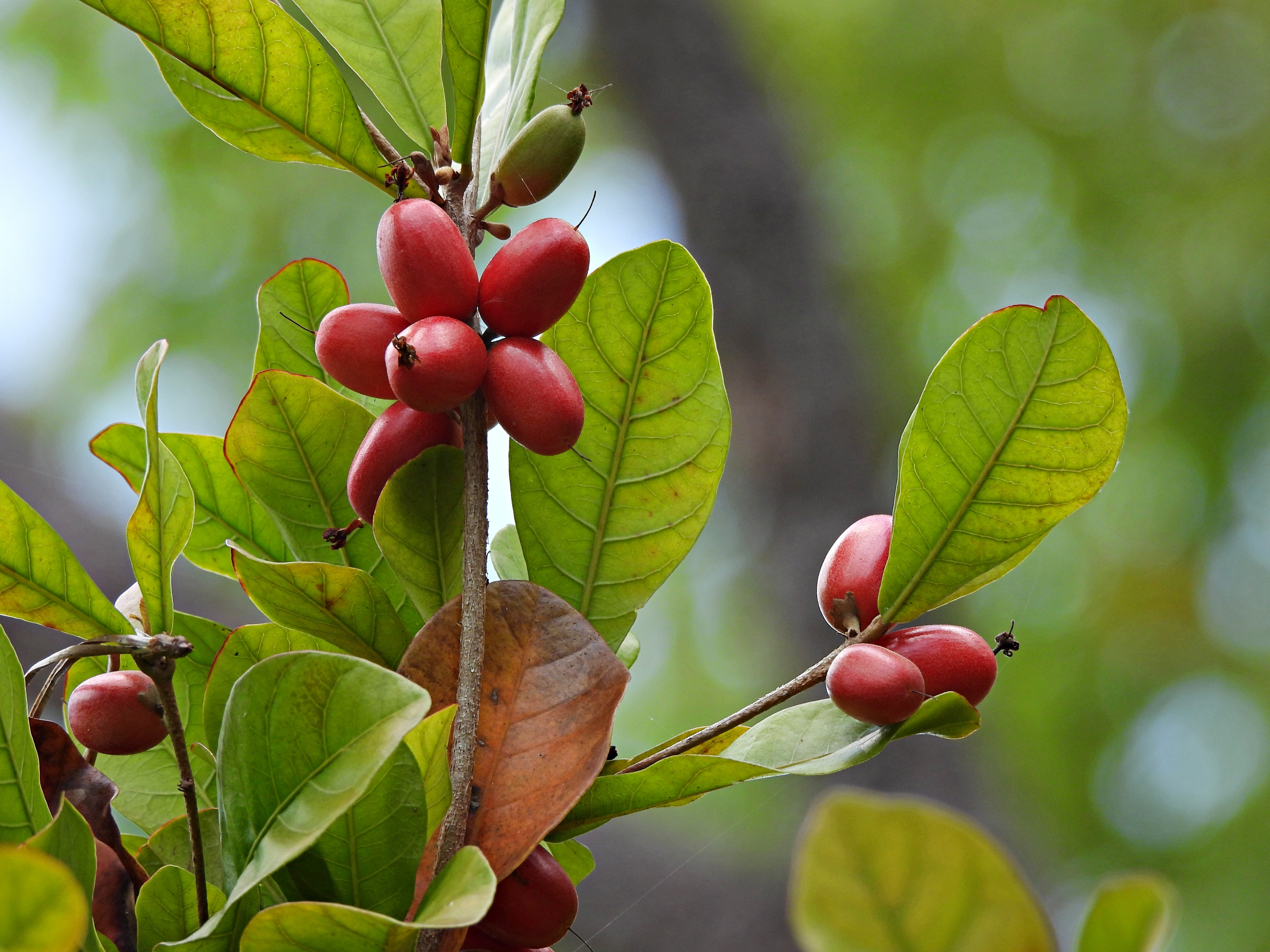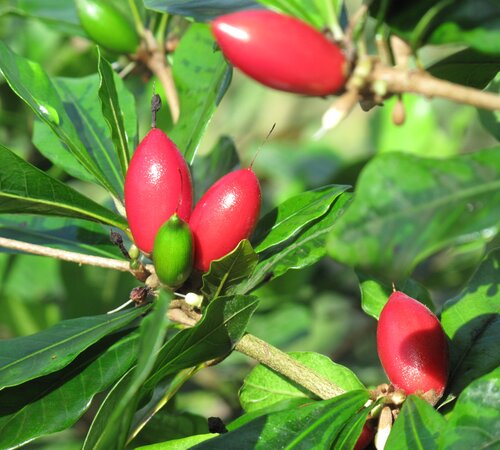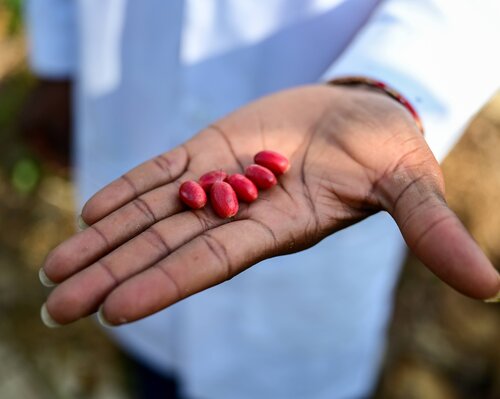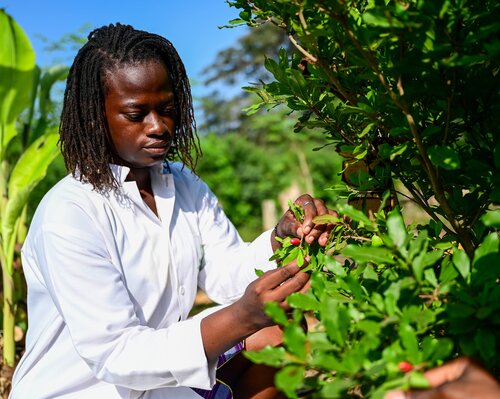Miracle berry
Synsepalum dulcificum
Crop Overview
Miracle berry (Synsepalum dulcificum (Schumach.) Daniell), also sometimes referred to as "miracle fruit" due to its unique ability to make sour foods taste sweet, is a semi-domesticated shrub or small tree species native to West Africa, particularly in Ghana and Nigeria, where it grows naturally in tropical forests. It is now also cultivated in other tropical and subtropical regions, including parts of the Caribbean, Southeast Asia and Florida in the United States.
Characteristics, Cultivation and Agricultural Practices
The miracle berry plant is a shrub or small tree (up to 6 meters tall) that thrives in warm, humid environments with well-drained, acidic soils. It is usually found in forests along water courses, in home gardens and backyards and on farms, particularly on fallow land. Management of the trees is generally limited to weeding, fertilizer application and pruning.
The plant has some natural resistance to pests and diseases, but common issues include root rot and leaf spot. These can be managed through good cultural practices, such as proper watering and spacing.
In trials in Florida, yields of up to 3.44 kg of fruit per tree have been recorded, although the average was 2.1 kg. The fruit is typically harvested by hand.
Nutritional, Economic and Medicinal Value
Miracle berry fruits are low in calories and rich in vitamins and antioxidants, particularly vitamin C and phenolic compounds, which contribute to their health benefits. Although they are not typically consumed in large quantities, their unique property of altering taste makes them popular in culinary applications, especially in enhancing the flavors of sour foods. They are often used in fruit juices, desserts and sauces. Miraculin, the active ingredient that changes sour taste to sweet, is used as a natural sweetener by the food and beverage industries. Miracle berry is also used in diabetes treatments to restore taste perception in patients undergoing chemotherapy treatment for cancer. It can be used in cosmetics for treatment of hair breakage.
Cultural Importance
Miracle berry is used in a wide range of traditional rituals and traditional medicine in West Africa.
Fruits, leaves and roots are sometimes used in magical and spiritual rituals and all parts of the tree are used for various purposes in traditional medicine, as they are believed to possess various health benefits, including anti-inflammatory and antioxidant properties.
Gender Perspectives
The trees are mainly owned and managed by men, but women are primarily responsible for food uses. Men are the main holders of traditional knowledge on the tree.
Why is the Crop Underutilized?
The main challenge to increasing production of miracle berry is that it is difficult to cultivate and takes 3 to 4 years to first bear fruit. It is also susceptible to root rot, which can lead to rapid loss of established trees.
Diversity Available in Genesys
As of December 2024, Genesys, the online information platform about plant genetic resources for food and agriculture conserved in genebanks worldwide, lists only seven samples of miracle berry.
- Five samples are held by the Plant Genetic Resources Research Institute, Ghana.
- One sample is held by the Tropical Agricultural Research and Higher Education Center, Costa Rica.
- One sample is held by the Tropical Agricultural Research Station, Clonal Repository, Puerto Rico.
Of these, two samples are classified as traditional varieties or landraces, while four remain unclassified.
Current Breeding Efforts
At this time, there are no records of systematic breeding efforts for miracle berry, but research is ongoing.




